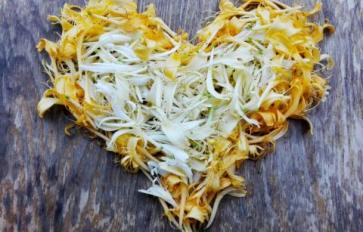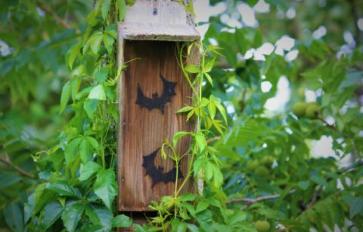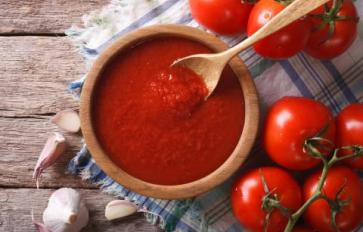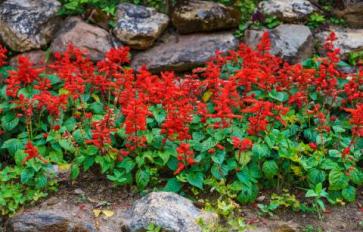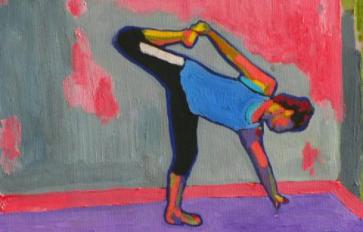
Bees are vital to the world around us. They pollinate our flowers, as well as our food supply. In fact, 75 percent of our food relies on the pollination of bees. We love what bees do for us, but we don't always love the outcome of coming into close contact with them. If you spend anytime outdoors, chances are at least once in your life you will experience a bee sting. Sadly, this often can end the bee's life and leaves you with a nasty sting. Unfortunately, you can't do anything for the bee, but you can soothe your wound.
First, remove the stinger and clean the wound. This can easily be done by scraping it with a credit card or another straight-edged object. It may be tempting to pinch or use tweezers to remove the stinger, but that is likely to increase the venom that is injected into the affected area. By scraping, you minimize the venom injection.
Next, take caution if there are other bees around. If you were handling bees or are near a hive, a sting could signal to the other bees that you are a threat. Bee stings emit a pheromone that signals trouble to the rest of the hive. To avoid multiple stings, puff a bit of smoke around the affected area to ward off other bees. The smoke will reduce the odor that results from a sting, and keep the other bees from feeling threatened.
If a bee comes buzzing around, remain calm. Swatting causes the bees to become more aggressive and likely to sting. If you're calm, chances are the bees will be too. Bees are not naturally aggressive. They only become aggressive when they feel threatened. So do your best not to run.
Whether it took you by surprise or you began the swatting dance, when a bee does sting you, it hurts. Due to the protein in the venom, you experience pain and swelling from a sting. However, when the moment strikes there are several home remedies that can help relieve the pain. So if your first aid kit is in need of some replenishment, go into your kitchen and make your own. Then use one of these 7 home remedies to help soothe that biting sting.

1. Ice
The first response to any bump or bruise is to put ice on it. Same thing goes for a bee sting. An ice pack can be utilized to help numb the pain. This also helps in controlling the swelling by slowing down the blood flow. Slow blood flow means the venom is restricted, rather than spreading. Place the ice pack on the affected area for 20 minutes to reduce pain.
2. Essential Oils
The soothing quality of essential oils can ease the pain from a bee sting. Just as it soothes you when using aromatherapy, the oils can relieve discomfort from the sting. Lavender oil works quite nicely. It is a very calming oil with healing benefits - such as anti-inflammatory properties - that can help with a bee sting. It aids in neutralizing the venom, thus reducing the very thing that caused the pain in the first place.
3. Baking Soda
Among baking soda's many uses is treating bee stings. Applying a paste consisting of baking soda – sodium bicarbonate - and water to the painful area can relieve pain and swelling. Baking soda reacts to the sting by reducing the pain caused by the venom. It does this due to the acidic nature of a bee sting. Baking soda is alkaline, which attacks the acidic venom and neutralizes it, allowing you to ease the pain. When making a baking soda paste, leave the paste on for 15 minutes before removing.
4. Epsom Salt
Epsom salt is comprised of magnesium and sulfate. The two combine to form a natural anti-inflammatory. This is great news for a bee sting! The anti-inflammatory properties in Epsom salt calm down the area, helping to ease the pain and reduce the swelling. Epsom salt can also help in drawing out the stinger as it forces impurities from the body. Next time you get stung, make a compress of Epsom salt and water and apply to the affected area.
5. Toothpaste
Spreading toothpaste on a bee sting has also been known to help by drying out the venom (thanks to the glycerin content). It also has alkaline properties that neutralize the acidic venom, which is key in reducing pain. Apply a small amount to the affected area and repeat as necessary. The cooling sensation of mint in toothpaste is also a nice bonus.
6. Aloe Vera
Aloe vera is nature's little miracle for soothing sunburns and healing skin. It can also help with a bee sting. Deriving the substance from the gel and latex of the leaf, Aloe vera has long been used medicinally. Aloe vera has anti-inflammatory and antiseptic properties that attack the pain caused by the venom, providing you with relief. Simply apply some to the sting and let relief set in.
7. Honey
As if the bee was to say “I'm sorry,” it has created the remedy to its own sting. Raw honey has natural medicinal properties that have been utilized to treat wounds for centuries. It is antibacterial, so smearing some on the sting can reduce pain and swelling. Raw honey also helps with the inflammation caused by the sting. Rub some honey on the area and let it rest for a few minutes or so. Rinse it off with water and repeat as needed.
If you are looking for a strong medicinal grade honey, give Manuka honey a try. It is more potent than the average consumer honey and has long been used for its medicinal values. Read more about Manuka strength and medicinal properties here.
Bee sting symptoms are usually mild, resulting in swelling and discomfort. There is a small percentage of people, however, that is highly allergic to a sting. If a sting results in an allergic reaction that results in anaphylaxis, immediately seek medical help as the sting can be fatal. Symptoms of anaphylaxis include difficulty breathing, rapid pulse, dizziness, swelling of the throat, and loss of consciousness.
We love bees, and we love what bees do for us. Without them, we wouldn't be able to enjoy the foods we so desperately need. While it may be tempting to run and swat to prevent a nasty sting, truth is, we are more of a threat to honey bees than they are to us. Through monoculture farming practices as well as other man related threats such as pesticides, honey bee populations have been on the decline. One-third of our fresh fruits and vegetables - such as broccoli and apples - rely on honey bee pollination. And of course, if you like honey, then you need the honey bee!
So next time you hear a buzzing in your ear, remember, bees don't really want to sting. In fact, they are pretty happy creatures. By remaining calm and cool, and you may find that you and the bee can live in peaceful, happy harmony.




